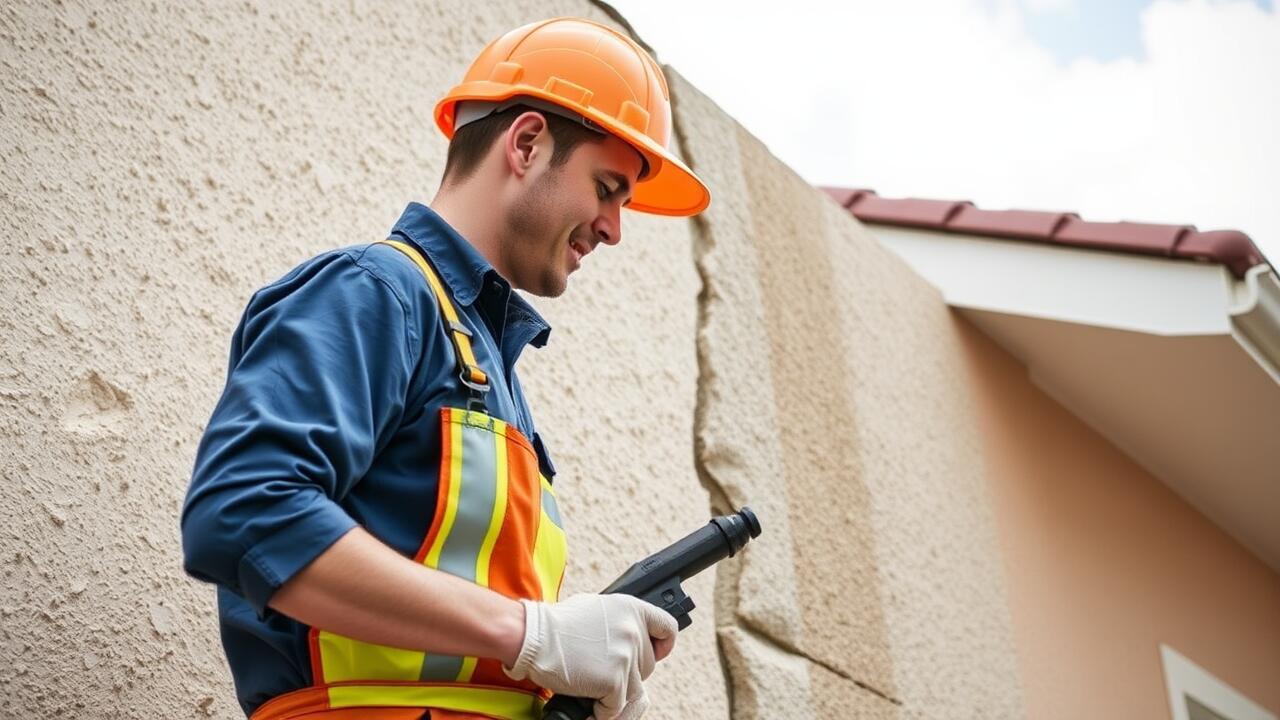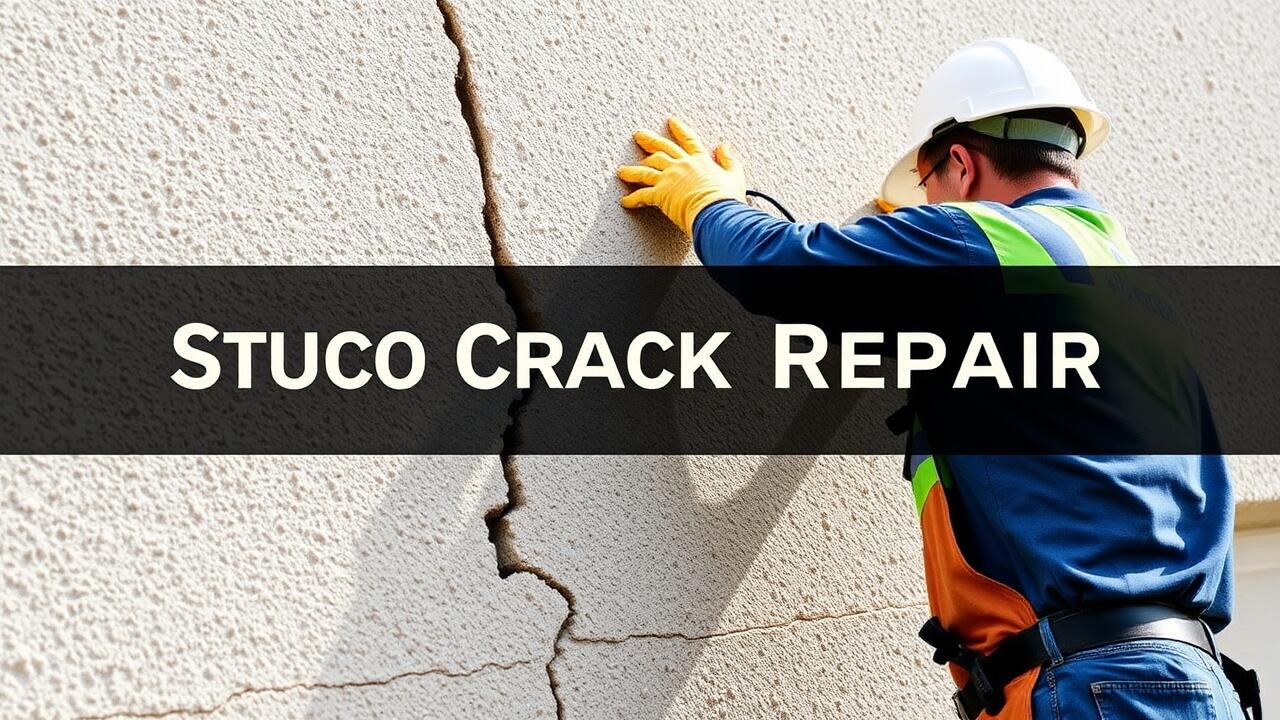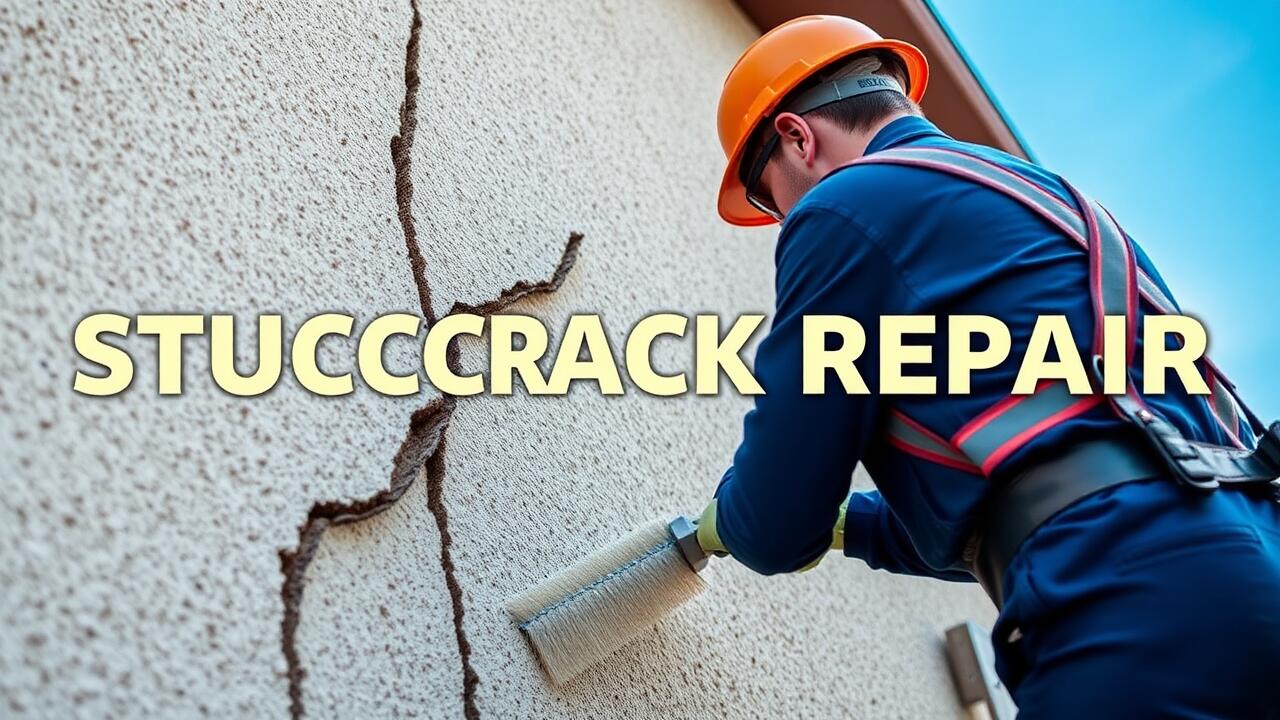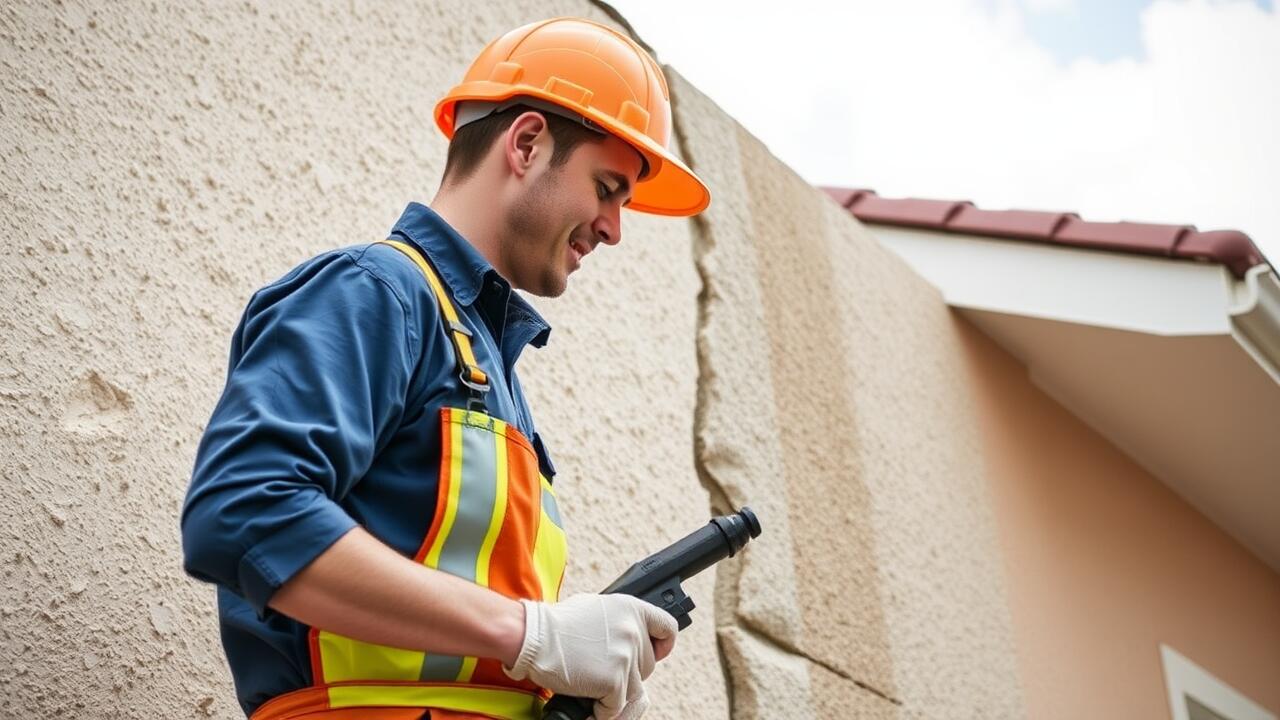
Applying the Repair Compound
Before applying the repair compound, ensure that the surface is clean and free from debris. Scrub the area around the crack with a stiff brush to remove any loose materials. Next, wet the area slightly to ensure better adhesion of the compound. When selecting a repair compound, choose one that is specifically designed for stucco. This type of product typically comes in a pre-mixed form or as a powder that you can mix with water.
Using a trowel or a putty knife, apply the compound directly into the crack, pressing it firmly to eliminate air pockets. Smooth it out using the trowel, aiming for a level surface that blends seamlessly with the surrounding stucco. For those considering professional help, searching for "Stucco Crack Repair in Los Feliz, Los Angeles" can connect you with experienced technicians who can ensure a flawless finish. Once the repair compound has been applied, allow it to cure according to the manufacturer's instructions before moving on to texturing or finishing touches.
Techniques for Smooth and Even Application
When applying the repair compound, achieving a smooth and even finish is essential for a professional look. Start by using a trowel to spread the compound evenly over the damaged area. Hold the trowel at a slight angle and apply consistent pressure as you move it across the surface. This technique helps eliminate any air pockets and ensures that the compound adheres properly to the existing stucco. For smaller cracks, a patching knife can provide more precision and control.
After the initial application, resist the temptation to overwork the area. Allow the compound to set slightly before refining the surface with a damp sponge or trowel. This will help achieve a finish that blends seamlessly with the surrounding stucco. If you are considering Stucco Crack Repair in Los Feliz, Los Angeles, employing these techniques can enhance the durability and aesthetic of your repair work, ensuring that the area looks cohesive and well-maintained.
Finishing Touches on the Stucco
To achieve a professional appearance for your stucco repair, a few finishing touches are essential. Start by using a mason's trowel to smooth out the surface of the newly applied compound. This step helps eliminate any inconsistencies and gives the repair a more seamless look. Pay attention to blending the edges of the repair with the surrounding stucco. This can often involve layering and feathering the repair material out from the center to mimic the original texture and contours of the existing surface.
Once the repair is smoothed and shaped, focus on texturing to match the surrounding area. Various techniques exist, ranging from a simple sponge technique to more specialized tools that can replicate different stucco finishes. If you are not confident in your ability to achieve the desired look, consider enlisting professional assistance for Stucco Crack Repair in Chatsworth, Los Angeles. Proper texture matching is vital for ensuring that the repair is barely noticeable in comparison to the rest of the stucco.
Texturing and Matching Existing Surfaces
Texturing and matching existing surfaces is crucial for a successful stucco repair. After applying the repair compound and allowing it to dry properly, you will need to recreate the texture of the surrounding areas to ensure a seamless blend. Various techniques can be used, such as spraying, troweling, or stippling, depending on the original finish of the stucco. It's essential to take your time during this process to achieve a consistent appearance.
If you're located in Los Feliz, Los Angeles, consider consulting with a professional who specializes in stucco crack repair. They possess the necessary skills to effectively match textures and may also have experience with the specific styles prevalent in the area. This expertise can help avoid noticeable repairs and preserve the aesthetic integrity of your home's exterior. Properly finished repairs not only enhance the appearance but can also prolong the lifespan of the stucco.
Sealing and Protecting the Repair
Sealing the repair is a crucial step in ensuring the longevity and effectiveness of the stucco work completed. After the repair compound has fully cured, apply a high-quality sealant specifically designed for stucco surfaces. This will help protect against moisture penetration and prevent future deterioration, which can be particularly important in areas with fluctuating weather conditions. Carefully follow the manufacturer's recommendations regarding application methods and drying times to achieve a robust seal that enhances the repair's durability.
For those considering Stucco Crack Repair in Los Feliz, Los Angeles, it's essential to use a sealant that is compatible with the surrounding materials. A thorough application ensures that the repaired area blends seamlessly with the existing stucco, maintaining both aesthetics and function. Regular inspections of the sealant over time can help identify any wear or damage, allowing for timely maintenance. Keeping the surface clean and ensuring proper drainage can further extend the lifespan of the repair.
Best Practices for Weatherproofing
Proper weatherproofing is essential to prolonging the life of stucco repairs. Start by ensuring that any cracks or gaps in the repaired areas are thoroughly filled and sealed. Use a high-quality, flexible sealant specifically designed for masonry to provide an additional layer of protection against moisture. Expanding foam can be effective for larger openings, but ensure that it is trimmed flush with the surface once it cures to maintain a smooth finish.
After applying the sealant, consider painting the surface with a waterproof exterior paint that matches your home’s color scheme. Look for paint formulated for stucco surfaces to improve adherence and durability. Regularly inspect the repaired areas for signs of damage or wear, especially after severe weather events. For quality work in your area, consider services like Stucco Crack Repair in Los Feliz, Los Angeles, ensuring that expert care is taken with each repair. This proactive approach prevents further deterioration and maintains the aesthetic appeal of your home.
FAQS
What materials do I need to repair stucco on the outside of my house?
You will need stucco repair compound, a trowel, a mixing bucket, a spray bottle for water, a sponge, and possibly a texture tool for matching existing surfaces.
How long does it take for stucco repair to dry?
Generally, stucco repair can take anywhere from 24 to 48 hours to dry, depending on weather conditions and the thickness of the application.
Can I paint over repaired stucco immediately?
It’s best to wait at least a week after the repair is completed before painting to ensure the repair is fully cured and moisture-free.
How do I ensure that my stucco repair matches the existing texture?
To match the existing texture, observe the surrounding stucco closely and use a texture tool or sponge to replicate the pattern while the repair compound is still wet.
What are the best practices for sealing repaired stucco?
Use a high-quality waterproof sealant that is specifically designed for stucco, and apply it after the repair has fully cured to protect against moisture and weather damage.



